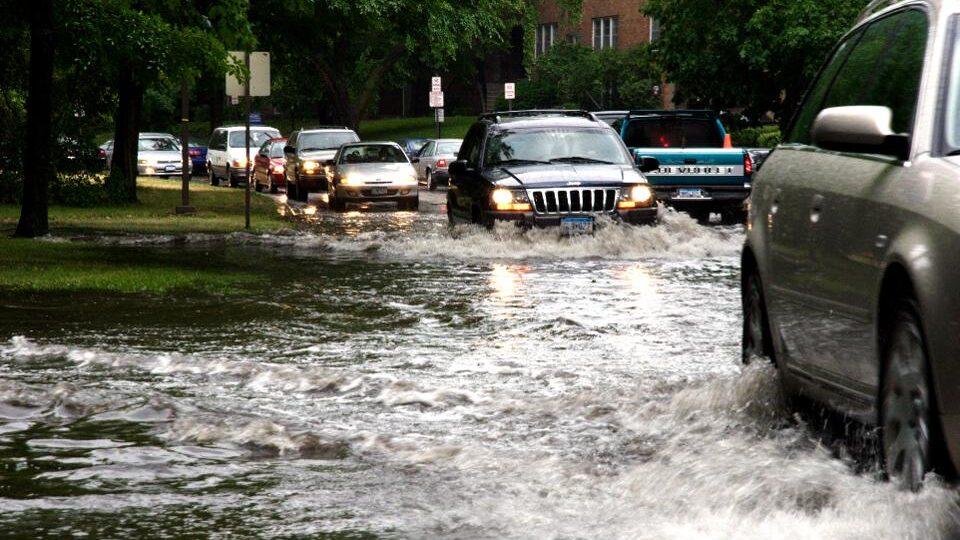If you’re approved for a mortgage for a home in a flood zone, your lender will likely require you to purchase flood insurance. As the borrower, it’s important to know why your lender is requiring you to have a flood insurance policy, how much it will cost and what it will cover.
Why do mortgage lenders require flood insurance?
Lenders typically require you to obtain flood insurance if a property you want to buy or refinance is located within a flood zone designated by the Federal Emergency Management Agency (FEMA).
“A mortgage lender has a financial interest to protect the property’s value in the event of a catastrophic flood loss, especially if that home is located in an area at higher risk for flooding,” explains Kyle Herring, an insurance claims professional and public adjuster at All American Public Adjusters in Austin, Texas.
“If flood damage is suffered and funding is not available to repair, the home’s value diminishes significantly, which negatively impacts the lender and the homeowner,” Herring says.
Madelyn Rodriguez, an associate attorney and insurance expert at Berger Singerman LLP in Boca Raton, Florida, notes that any government-insured mortgage — including an FHA, USDA or VA loan — requires the borrower to have flood insurance if the property is in a high-risk flood zone.
“A private lender who is not subject to the rules for federally-backed loans may also require you to have flood insurance, although there is no legal obligation for them to do so,” Rodriguez says.
To learn if your desired property is within a flood zone and may require flood insurance, you can visit FEMA’s Flood Map Service Center and search using the property’s address. You can also request this information from your real estate agent.
FEMA’s designated flood zones fall into two categories:
- Special Flood Hazard Areas (SFHAs), which include zones beginning with the letters A or V. These are higher-risk areas where you’ll probably be required to purchase flood insurance.
- Non-SFHAs, which are moderate- to low-risk zones with the letters B, C or X. Generally, you’re not required to obtain flood insurance if the home is in one of these zones.
What is the cost of a flood insurance policy?
If you’re not located in a high-risk flood zone, the cost of flood insurance may be $400 or less annually, according to Bradley.
If you’re in a high-risk zone, however, “the policy will be much more expensive — but, it can be reduced if your home is positively elevated above the flood plain by obtaining an elevation certificate completed by a licensed surveyor.”
If NFIP coverage is available in your area, it’ll likely be the most affordable option. The average cost of NFIP insurance yearly is approximately $700, Rodriguez says, “but this amount varies greatly by the location of the property, amount of coverage needed and proximity to bodies of water.”
Flood insurance premiums can also increase from year to year, especially for private insurance policies.
“Most see increases ranging from 6 to 12 percent annually,” Rummel says.
Additionally, flood zones and classifications can change. Your low-risk zone may be designated a high-risk zone later on, which means you may be required to get flood insurance or pay more for it.
“If you have lower policy limits, you may also want to increase your flood policy coverage limits in the future as the cost of construction increases,” Rodriguez says.
Keep in mind that if you opt to refinance down the road with a different lender, the new lender may be more or less stringent regarding flood insurance requirements, as well.
How much flood insurance coverage do I need?
To best determine how much flood insurance you’ll need for your mortgage, work closely with an insurance professional, advises Brian Bradley, personal insurance advisor for CBIZ Inc., an insurance provider, in Cumberland, Maryland.
Flood insurance either covers replacement cost value or actual cash value. The former is the expense to replace or repair a damaged property item that is insured, with no deduction calculated for wear and tear. Actual cash value, on the other hand, is the same cost, but minus depreciation for wear and tear based on the item’s condition and age.
“An insurance professional can help you calculate the replacement cost or actual cost value of your home and personal property and generate a flood policy quote,” Bradley says.
Most flood insurance coverage is provided via the National Flood Insurance Program (NFIP), which is available in many communities throughout the country. Coverage limits can vary, but the maximum amount is $250,000 on a residential property and $100,000 for its contents and personal property, according to Herring.
“You can choose a lower coverage ceiling if you want, so long as it satisfies the lender’s requirements,” Herring says.
Note that if your home is higher in value, the $250,000 ceiling may not be enough. To cover that gap, Rodriguez says you can get a supplemental flood insurance policy from a private company. These insurers aren’t as readily available like NFIP coverage is, however, and they may have much higher premiums and deductibles.
A standard NFIP policy on a primary residence pays for up to either the replacement cost or actual cash value of the actual damages or the policy limit of liability, whichever is less, says Carolyn Rummel, president of Florida Operations at Meadowbrook Insurance Agency, based in Sarasota, Florida. Most private insurance policies also follow this rule.
If NFIP coverage is not available in your area, you may be able to get a policy from a private insurer. Rummel recommends opting for a policy, if available, that insures up to 100 percent of the replacement cost value of the property.
“When evaluating the amount of insurance to purchase, always consider the cost of repairs as well as the cost of personal items and contents like clothing, electronics and furniture, too,” Rodriguez says.
How to avoid the flood insurance requirement
You’re only obligated to get flood insurance if your mortgage lender requires it and if your property is located in a high-risk flood zone. If you own your home outright with no mortgage attached, you don’t have to purchase flood insurance — although it’s still strongly recommended.
“If you select a lender or mortgage product that isn’t federally backed, you likely won’t be forced to comply with flood policy requirements,” Rodriguez says. “If the home you desire is in a high-risk area, you’ll probably have a difficult time locating any such lender.”
Learn more:
- How to buy flood insurance coverage
- Things homebuyers must know about flood insurance
- What are the costs of owning a home?





